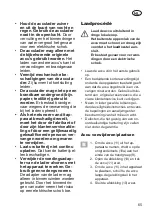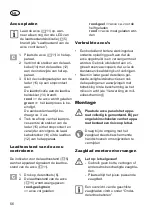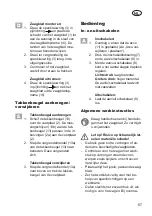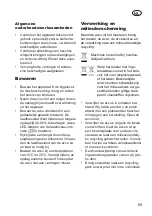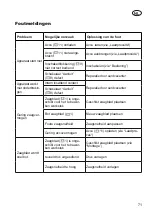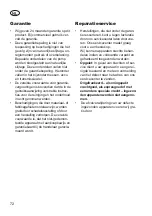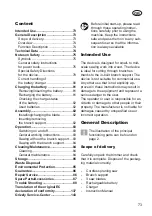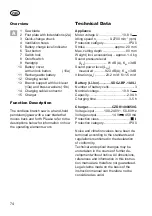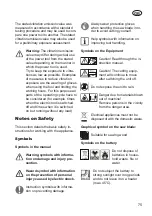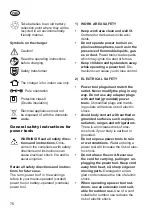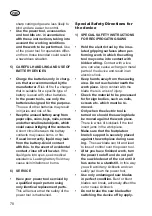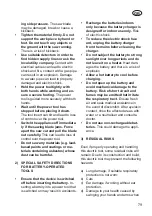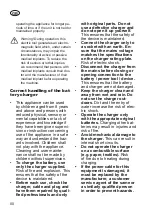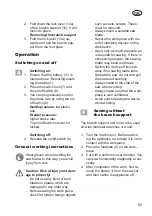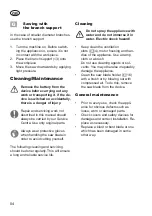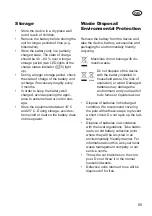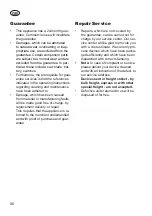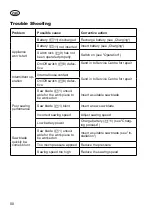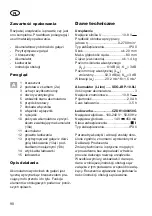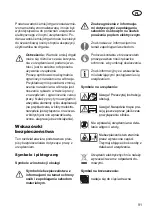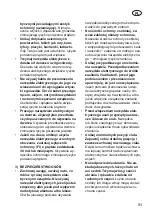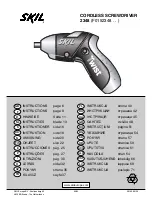
79
GB
ing side pressure.
The saw blade
may be damaged, break or cause a
kickback.
• Tighten the material firmly. Do not
support the work piece by hand or
foot. Do not touch any objects or
the ground with the saw running.
There is a risk of kickback.
• Use suitable detectors in order to
find hidden supply lines or ask the
local utility company.
Contact with
electrical cables can lead to electric
shock and fire, contact with a gas pipe
can result in an explosion. Damage
to a water pipe can lead to property
damaged and electric shock.
• Hold the power tool tightly with
both hands while working and en-
sure a secure footing.
The power
tool is guided more securely with both
hands.
• Wait until the power tool has
stopped before placing it down.
The tool insert can tilt and lead to loss
of control over the power tool.
• Switch the appliance off immediate
-
ly if the sawing blade jams. Force
apart the saw cut and pull the blade
out carefully.
This can lead to loss of
control over the power tool.
• Do not saw any materials (e.g. lead-
based paints and coatings or ma-
terials containing asbestos) whose
dust can be harmful.
2) SPECIAL SAFETY DIRECTIONS
FOR BATTERY-OPERATED
TOOLS
• Ensure that the device is switched
off before inserting the battery.
In-
serting a battery into a power tool that
is switched on may result in accidents.
• Recharge the batteries indoors
only because the battery charger is
designed for indoor use only.
Risk
of electric shock.
• To reduce the electric shock haz-
ard, unplug the battery charger
from the mains before cleaning the
charger.
• Do not subject the battery to strong
sunlight over long periods and do
not leave it on a heater.
Heat dam-
ages the battery and there is a risk of
explosion.
• Allow a hot battery to cool before
charging.
• Do not open up the battery and
avoid mechanical damage to the
battery. Risk of short circuit and
fumes may be emitted that irritate
the respiratory tract.
Ensure fresh
air and seek medical assistance in
the event of discomfort. After eye/skin
contact, rinse the affected areas with
water or a neutraliser and consult a
doctor.
• Do not use non-rechargeable bat-
teries.
This could damage the appli-
ance.
3) RESIDUAL RISKS
Even if properly operating and handling
this electric tool, some residual risks will
remain. Due to its construction and build,
this electric tool may present the following
hazards:
a) Lung damage, if suitable respiratory
protection is not worn;
b) Cuts
c) Ear damage if working without ear
protection.
d) Damage to your health caused by
swinging your hands and arms when

